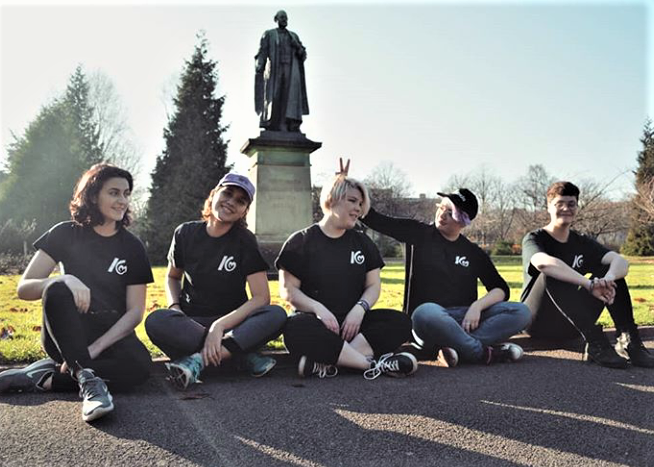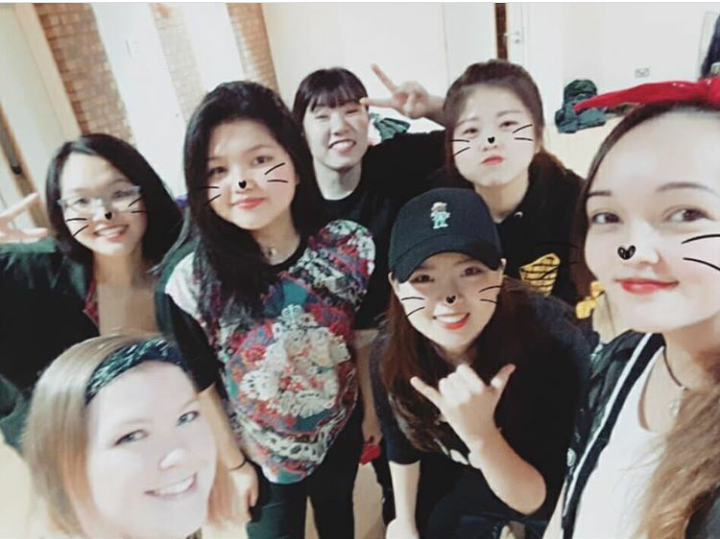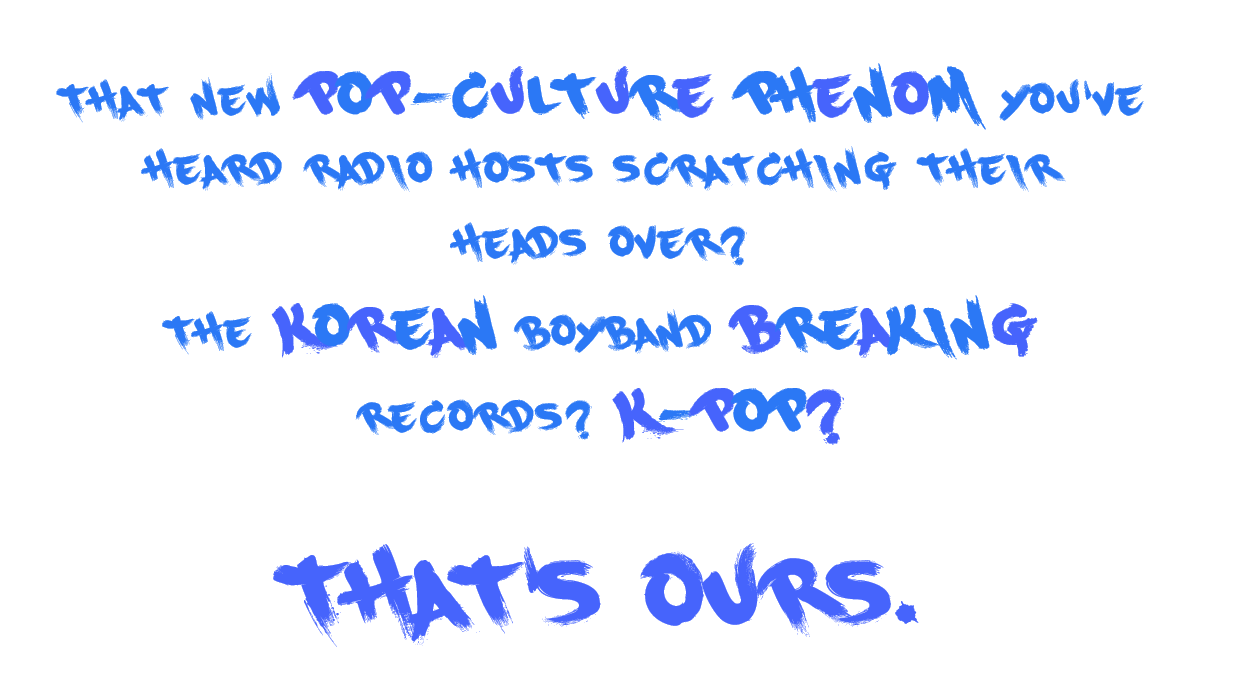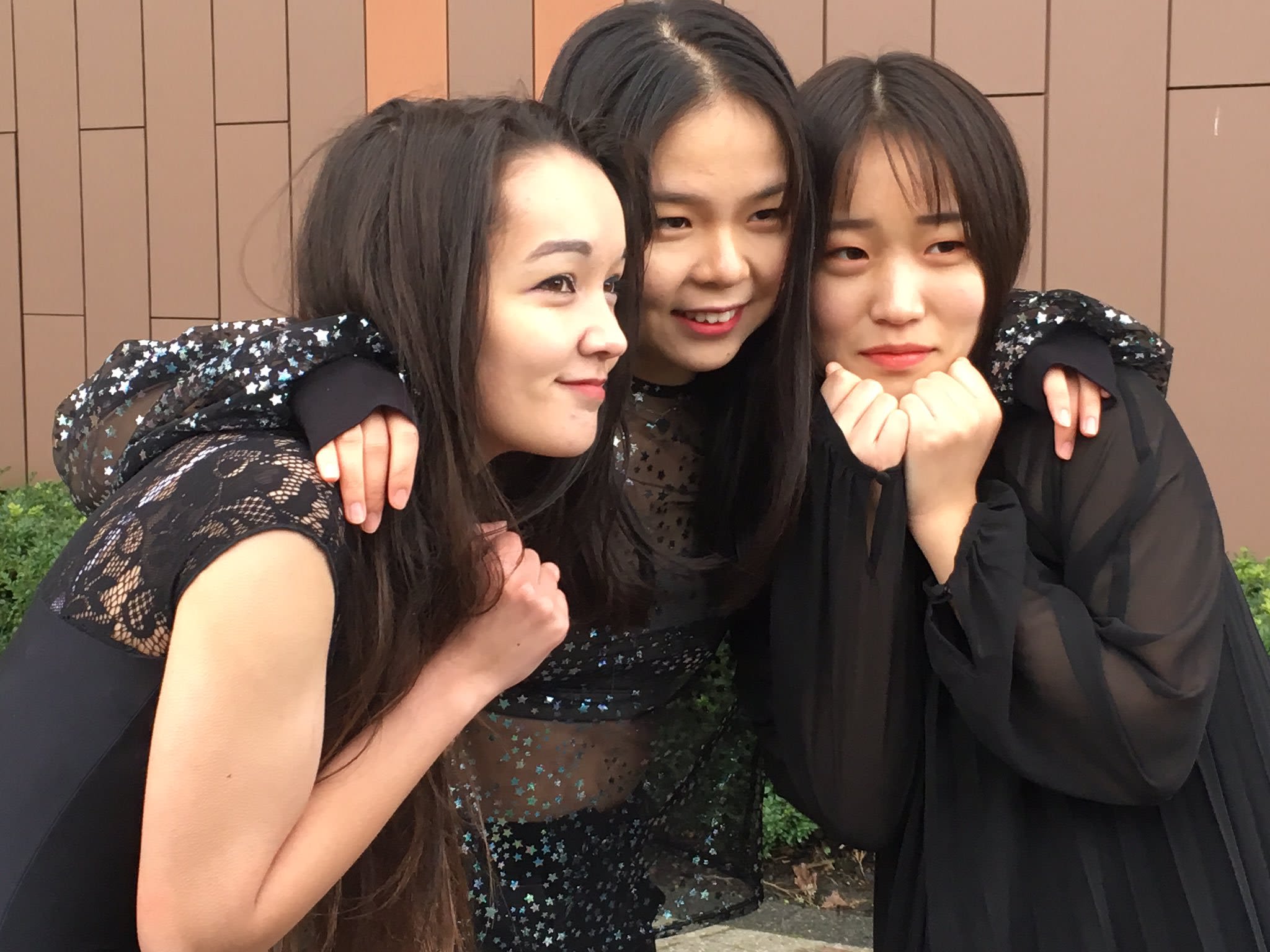I learnt how to dance like a K-pop star
Hannah Weiss joins the KChoreo dance crew to find out how K-pop has mobilised fan culture

I hear it first. The shimmering bassline reverberates through the chilly stairwell, making my eardrums throb and my heartbeat spike.
I reach the first floor, and lock eyes with the girl manning the information desk. There’s a frisson of panic in her fingers as she clutches her coffee mug close. On the second floor, I pass a student slumped in his seat, staring into his MacBook screen as if hoping to discover God’s Plan. The bassline thumps louder, and he groans softly, tugging his beanie down to protect his ears.
But the third floor of Cardiff University’s Student Union is empty. The chorus of Good Boy splinters into a staccato breakdown and I spin on the polished floor, right on the beat drop. Head tipped back, whispering the words. Because I know this song.
I know that it’s a collab between G-Dragon and Taeyang, two of Korea’s pop legends. I know G-Dragon owns his own fashion label, PeaceMinusone. I know Taeyang recently married actress Min Hyo-rin, breaking the hearts of a thousand girls who memorised the words to his hit single Wedding Dress. The two form the backbone of Big Bang, K-pop royalty. They’re the band BTS name as inspirations, which should be an introduction in itself.
BTS is the boy band that sold out Wembley Stadium in 90 minutes on 1st March. They’re due to bring their world tour to London in June. Rapidly gaining ground is girl band BlackPink, who sold out their Wembley dates for this coming May. At both concerts, you can bet fans will have every dance move memorized.
I’m here to attend a class with the KChoreo crew. I grew up dancing, and I know my eight-count from my uprock. But this lesson comes with a specific pop culture twist. Each Wednesday evening, Cardiff’s K-pop aficionados gather in this chilly studio to learn the choreography from a different music video.
I reach the fourth floor, and peek around the door to find a scattering of around 30 dancers in their mid-twenties. I catch a few tell-tale signs here and there. One girl’s t-shirt doubles as official BTS merch. Another has purple streaks in her hair and a phone cover emblazoned with an elaborate T – what might pass as cool calligraphy for some is to me unquestionably the logo of girl band Twice. There’s a boy with a sharp fade haircut to rival that of singer Jackson, who hails from Hong Kong. Some are already dancing. The rest of us dawdle on the side-lines, exchanging smiles.

Meet the KChoreo dance crew
Meet the KChoreo dance crew

They hold classes every Wednesday and perform in dance competitions around the UK
They hold classes every Wednesday and perform in dance competitions around the UK

"The best thing about coming to class is that it doesn't matter who you are or if you're shy. K-pop brings us together" - Bryony Evans, president
"The best thing about coming to class is that it doesn't matter who you are or if you're shy. K-pop brings us together" - Bryony Evans, president

Bryony Evans, 20, stands at the front of the class, setting up the music. Bryony is the president of KChoreo, organising classes alongside her Ancient History degree. She began dancing after discovering K-pop on YouTube.
“I’d watch the choreography, and think this looks so good, I have to learn,” she says. “I think that’s partly why K-pop is so popular, because people watch the music videos for the dancing.”
Choreography is an integral part of the K-pop package. Idols, as Seoul’s teen stars are known, train for years to perfect technically challenging routines. Besides boosting the performance factor, dance is a way for idols to connect with fans. Accompanying every slick music video is the dance practice clip, a breakdown of the full routine. It makes it easy to learn – and people do.
YouTube is populated with a myriad of cover groups. Bryony is hooked on East2West, a 60-strong crew hailing from Montreal. I have a healthy respect for the Risin’ Crew from Paris, who mix official choreo with original routines.
The Risin' Crew showcase their version of the choreography for Good Boy. Video Credit: Risin' Crew
Hannah Pritchard, 21, is KChoreo’s performance coordinator. “I got into BTS because of their dancing,” she confesses. “I think Astro is another one of the best dance groups, they're so clean. And I like Seventeen, they have 13 members, which makes their formations very effective.”
Kalina Konova, 27, grew up dancing in Plovdiv, Bulgaria, before studying Film at the University of South Wales. “I got into K-pop in 2009, but I’ve never had friends who like it,” she says. “I found KChoreo on Facebook and thought, this is exactly what I’ve been looking for.”
I’ve been searching for the same thing. Although BTS claimed Billboard’s Top Social Artist award for the last two consecutive years – 18.6 million Twitter followers plus their own emoji – I still get confused looks on the bus when their rapid-fire Korean lyrics seep through my headphones.
K-pop is a subculture that lives on social media, in the reaction videos and Twitter threads. By cultivating an online cult following, Korea’s bands slowly snuck their way into the UK charts.
As I slip into a space at the back of the class, I can’t stop sneaking glances at the people around me. To find a room full of K-pop fans, gathered here while the Welsh drizzle mists the windows, is a rare thing. We’re a long way from Seoul, but everyone shares a common secret.


KChoreo's performance team get ready to rehearse. The crew reached the final of a dance competition held by the Korean British Cultural Exchange in summer 2018
KChoreo's performance team get ready to rehearse. The crew reached the final of a dance competition held by the Korean British Cultural Exchange in summer 2018

Hannah Pritchard (left) is KChoreo's performance coordinator. She choreographs and teaches their dance routines
Hannah Pritchard (left) is KChoreo's performance coordinator. She choreographs and teaches their dance routines
This connection sparked friendships that bridged borders long before K-pop launched its international crossover. “I think you can come from any cultural background but when you all like these groups, you share that,” Bryony says. “I met a lot of my international friends online, but when the groups tour Europe, we all meet up.”
The first verse of G-Dragon and Taeyang’s Good Boy plays on repeat as we rehearse. The choreography focuses on footwork, a rapid-fire mix of kicks and shuffles that must be executed perfectly in sync to the beat. My t-shirt is sticking to my sweaty spine. The purple-haired girl’s ponytail is wilting. But the challenge of cracking the tough choreography helps the KChoreo crew relate to the day-to-day struggles of their idols.
“K-pop groups are constantly working,” Bryony says. “But the performances are amazing – they can dance, they can sing, they can rap. Often they’ll have comebacks every three months. Beyoncé might release one album and then go on tour for a year, but Stray Kids, my favourite band, have released four albums in one year.”
G-Dragon and Taeyang break down their choreography in the dance practice video for their collab track Good Boy. Video Credit: YG Entertainment
G-Dragon and Taeyang break down their choreography in the dance practice video for their collab track Good Boy. Video Credit: YG Entertainment
J.Y. Park is the founder of JYP Entertainment, home to Stray Kids, the nine-member boy band following in BTS’ footsteps by producing their own music. In June 2018, Park spoke at the SparkLabs business conference in Seoul. He revealed the company’s plans to launch a girl group in Japan, highlighting a strategy to target overseas markets.
“The first stage of K-pop was exporting Korean content overseas,” he said. “The second stage was blending foreign talent within Korean groups. Now I believe the next step will be developing, producing and releasing foreign talent.”
Stray Kids relate to their fans' daily struggles in Grow Up. Video Credit: JYP Entertainment
Park is not the only Korean music executive to set his sights abroad. Lee Soo-Man, the founder of rival label SM Entertainment, created boy band NCT specifically for this purpose.
Lee announced their debut at a press conference in 2016. “SM’s new artist NCT is an abbreviation of Neo Culture Technology,” he said. “Starting from Seoul, individual teams will debut in cities around the world. We will create borderless content everyone can enjoy.”
A Chinese configuration of NCT released a Mandarin version of the song Regular in January 2019. Writing for Forbes, music columnist Tamar Herman describes their existence as the realisation of Lee’s intention to export Korean culture.
“The new act is the epitome of what it means to be NCT,” she says. “The re-issue of Regular for the Chinese market is the first true sign that NCT’s raison d'etre of releasing the same music in different languages for different markets is coming to fruition.”
WayV, the Chinese sub-group of boy band NCT, perform Regular. Video Credit: SM Entertainment
This strategy to crack overseas markets often hinges on foreign talent to strengthen the group’s connection with fans. While the boys who make up the latest iteration of NCT are based in Beijing, Bryony reveals that four members of JYP’s boy band Stray Kids speak English, with two born in Australia.
“They talk a lot about themselves in their music,” she says. “They’ve been through some tough times, so it’s really relatable for fans.”
Hannah echoes this when discussing BTS. “There's just this genuine aspect to them that people connect with,” she says. “They promote a lot of messages about youth and loving yourself, which is very engaging.”
BTS share their hopes and fears for the future in Young Forever. Video Credit: Big Hit Entertainment
It’s often hype tracks like G-Dragon and Taeyang’s Good Boy that hook fans on K-pop. As we rehearse the routine, it’s that energy that keeps me dancing through my exhaustion. But when the class winds down, Bryony plays a softer track. It’s Stray Kids’ Grow Up, a melodic B-side that encourages listeners to keep pushing through life’s battles.
Nobody in this room speaks Korean, but everyone tries to sing along. We’re just a handful of millennials, in a technology-driven world where cultural barriers are fracturing and fusing while we come of age. Halfway around the world from its origins in Seoul, K-pop is the solace we share.
Connect with KChoreo here.
The KChoreo crew in action
The KChoreo crew in action
All images provided courtesy of KChoreo.

